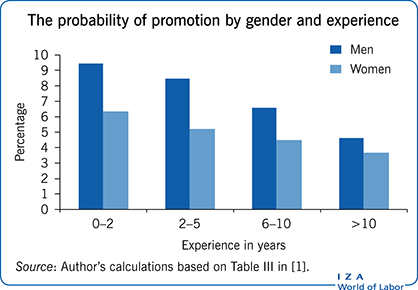Elevator pitch
The gender wage gap is largely due to men and women holding different kinds of jobs. This job segregation is partly driven by gender differences in careers in corporate hierarchies. Research has shown that the careers of men and women begin to diverge immediately upon entry into the labor market and that subsequent career progress exacerbates the divergence. This divergence of career progress explains a large part of the gender wage gap. Understanding how and why the careers of men and women differ is necessary to design effective policies that can reduce the gender differences in hierarchies.
Key findings
Pros
Research has identified many feasible policy options to address gender differences in initial job assignments, promotion rates, and the wage returns of various career events.
Appropriate policies may be designed based on research showing that gender differences in career outcomes are largely due to differences in educational background, career interruptions, hours worked, and psychological attributes.
The key policy instruments are education and family-leave policies, which aim to decrease gender differences in educational background and career interruptions.
Cons
Designing effective policies is difficult due to lack of agreement about the relative importance of the causes of gender differences in careers.
Little evidence exists on the effects of concrete policy interventions on gender differences in careers.
Most policies will only have an effect in the long term; e.g. policies to reduce gender gaps in specific fields of studies will take a long time to be reflected in career outcomes.
